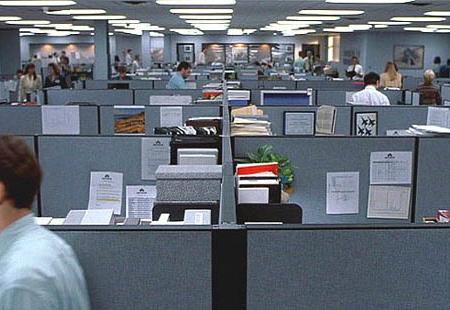Are Associate Cubicles the Next BigLaw Trend?
Published: Aug 31, 2015

New associates at Paul Hastings’ New York office are in for a novel seating arrangement when the firm moves into its new digs next year: cubicles. Although newer associates at New York law firms often share offices with one of their peers, Paul Hastings’ first- and second-year associates will be seated in pods of 12 in large areas on the ends of floors, separated from the rest of the office by glass dividers in what the firm is calling “end zones.”
Although management promises that it’s “prime, window-lined” real estate, there’s no getting around the fact that a cubicle isn’t an office. Barry Brooks, the chair of the firm’s New York was quoted in the Wall Street Journal saying, “I don’t feel bad about it. … I really do believe first- and second-years will benefit from true collaboration—they feed off each other.” The move is part of the firm’s redesign of its office to reduce its footprint by 25%, even without downsizing any of its workforce.
If any firm can stand to take the hit among new law school grads, it’s Paul Hastings. The firm has topped Vault’s list of the Best Law Firms to Work For for three years running and is first in Associate Satisfaction too. And perhaps the change will be welcome to the new associates. As Brooks stated, millennials are “used to working in cafes and they want to sit next to their colleagues.” Most tech firms, including Google, eBay, and Facebook have open floorplans, as do many banks like Goldman Sachs and American Express. According to the International Facility Management Association, about 70% of U.S. offices have some sort of open floor plan.
And although what the WSJ labeled “Lawyer Cubicles” may be new to BigLaw associates, they aren’t exactly new to lawyers. Staff attorneys and contract doc reviewers have long worked in cubes or in conferences rooms (or even converted storage spaces). New attorneys do tend to bounce ideas off each other often, and being in a pack with several of your peers could make navigating the sometimes difficult waters of BigLaw life a little easier. I’ve personally worked in all sorts of environments—cubicles, shared offices, and private offices—and have found that they all have their plusses and minuses. When I first moved to my private office I missed my officemate and found it to be lonely and too quiet. I don’t think I would have minded a bullpen for new associates, but maybe I’m in the minority.
Law firms tend to be conservative workplaces. I doubt we’ll see senior associates or partners giving up their private spaces any time soon. But BigLaw firms are also quick to follow each other’s leads. If Paul Hasting’s experiment works, you can expect to seem more firms moving in this direction in the near future.
